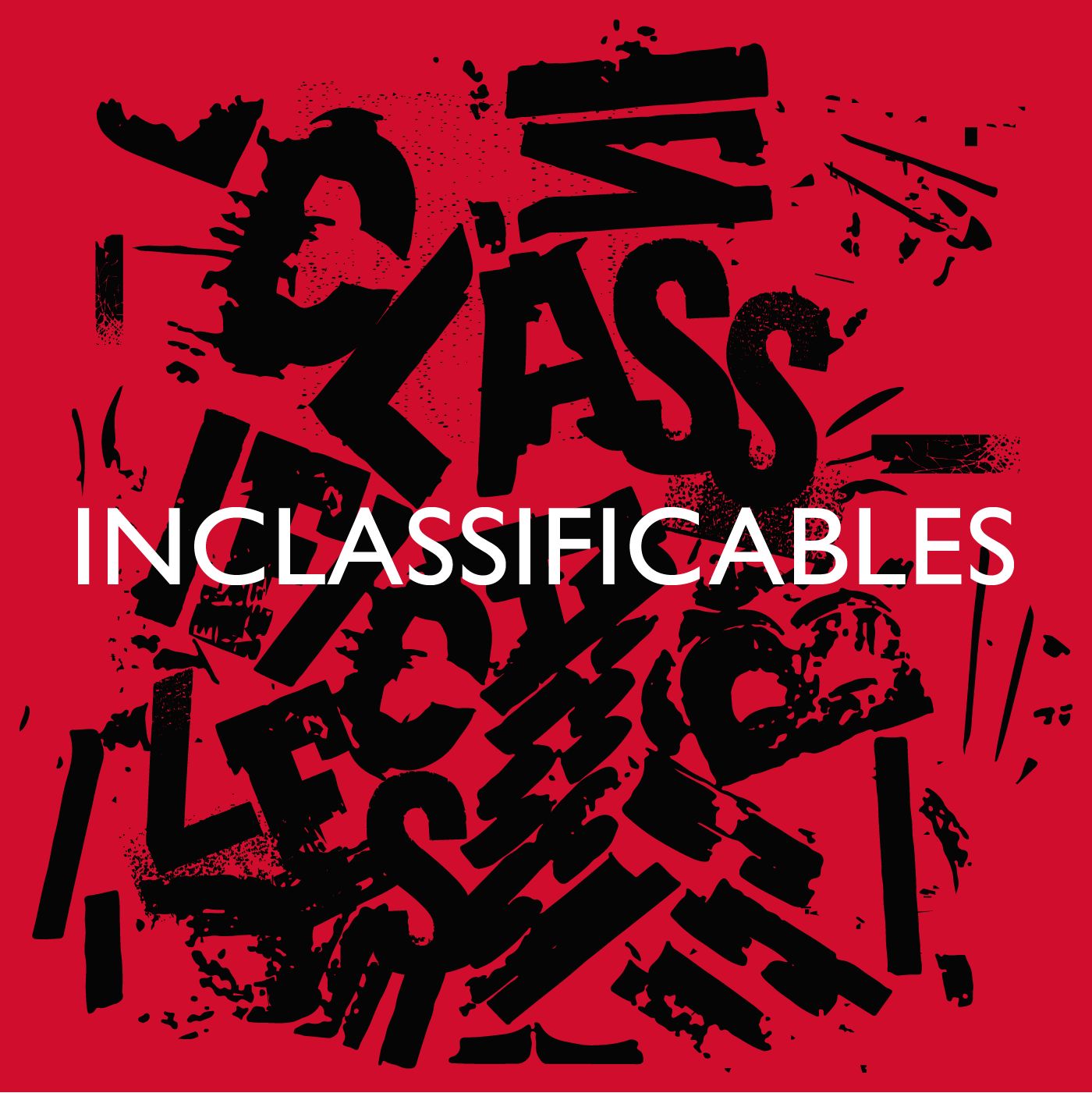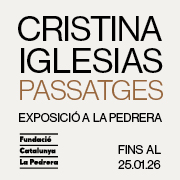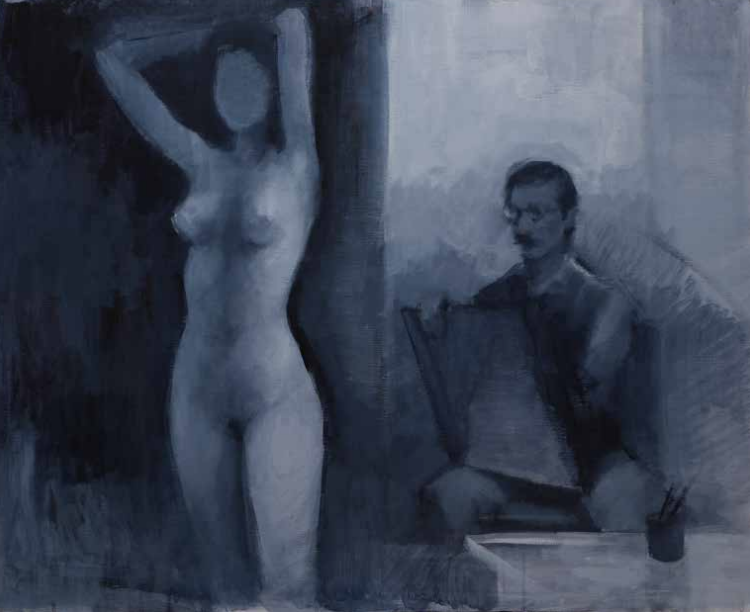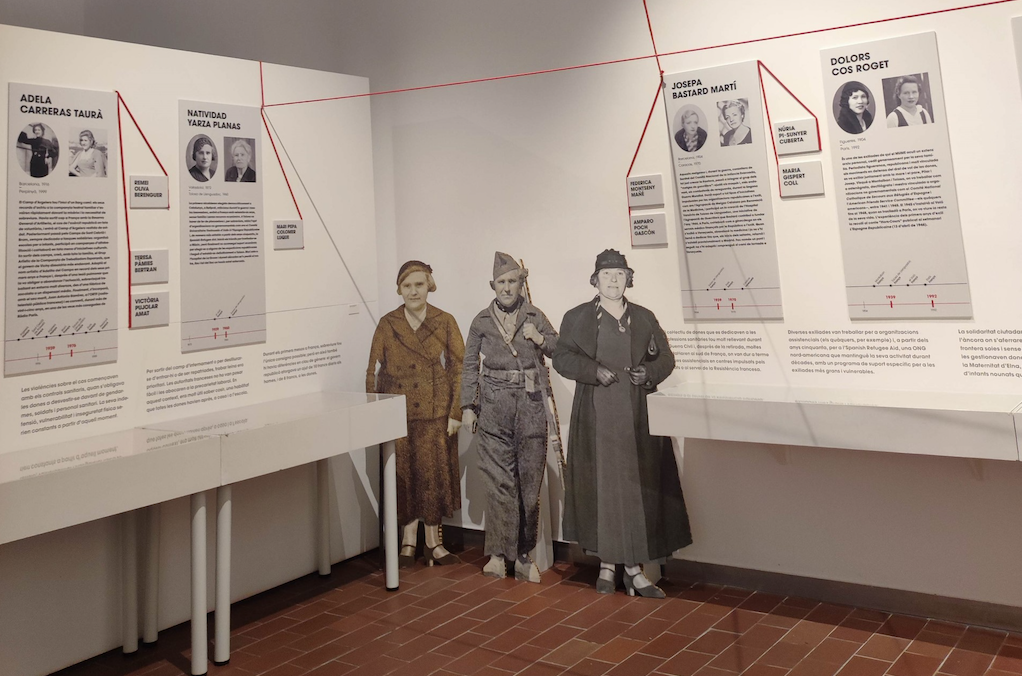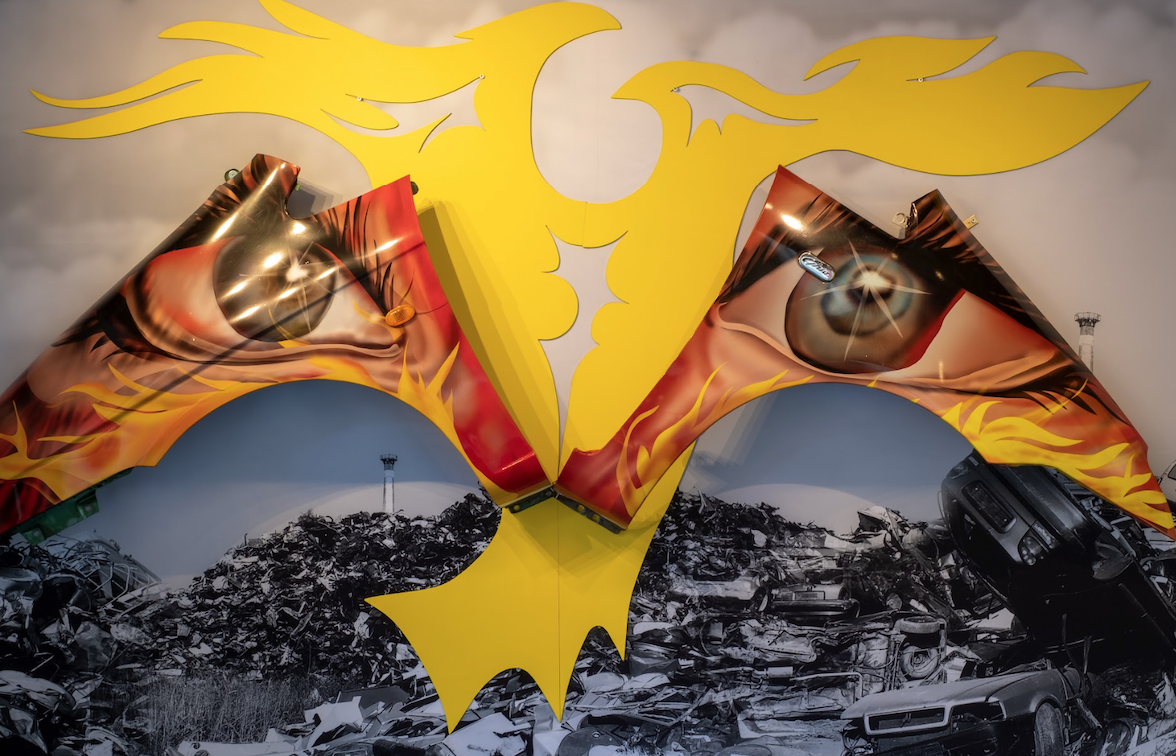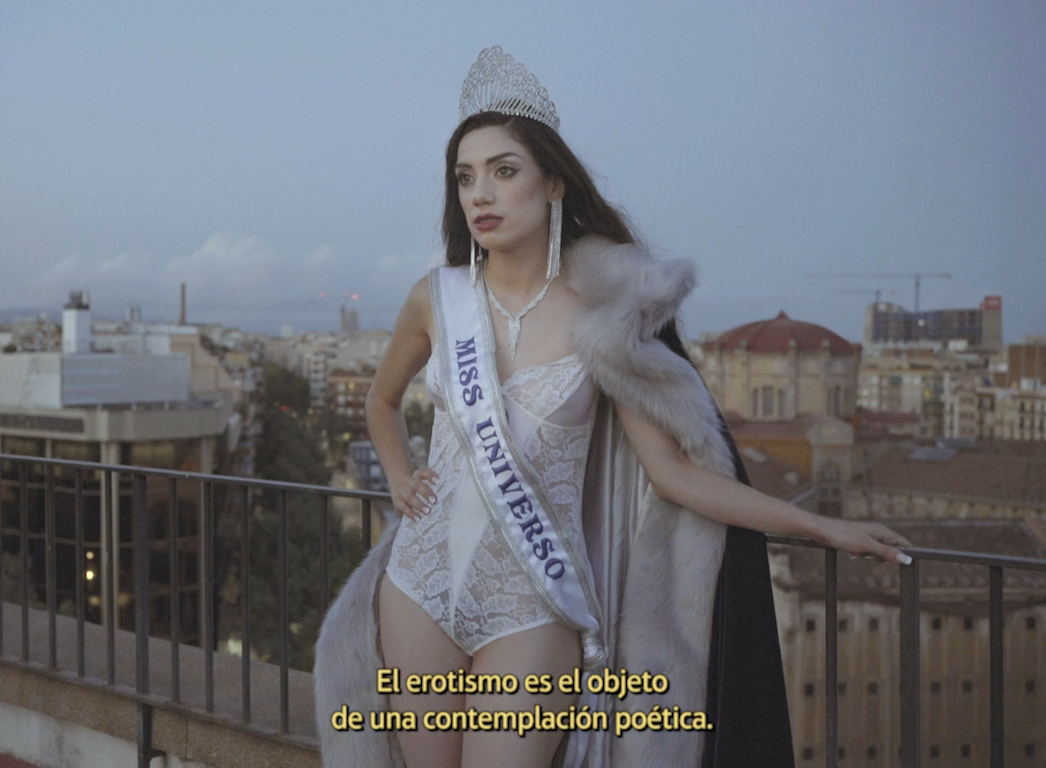contests
Ninth edition of La Nuu, International Photography Festival
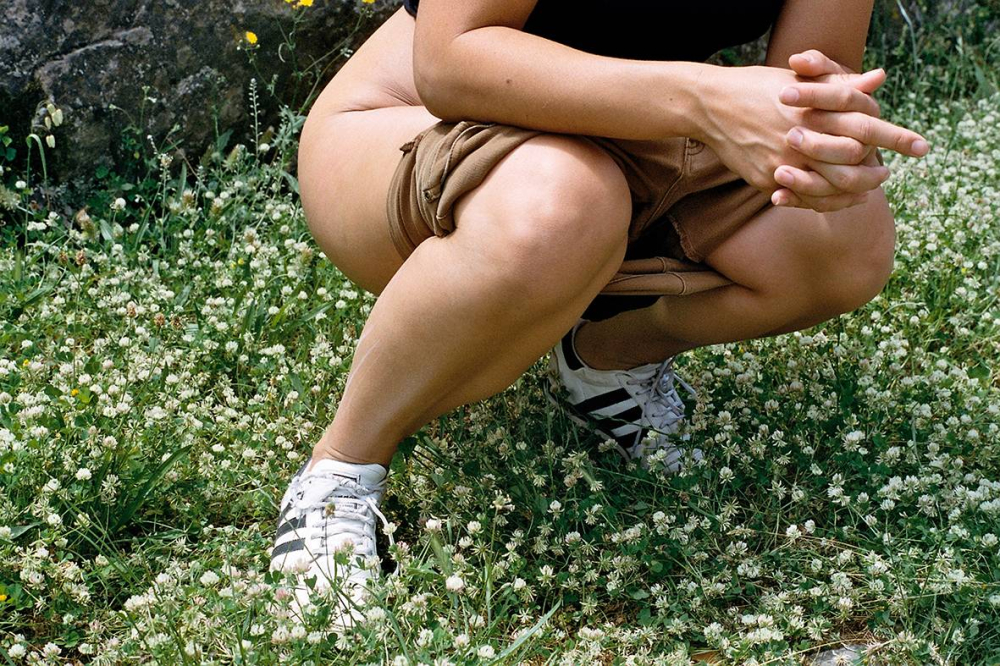
Throughout the month of October, Rubí (Vallès Occidental) will host the ninth edition of La Nuu, an International Photography Festival that this year has around fifteen proposals from artists from all over the world. The competition includes names such as Annemarie Schwarzenbach, Calin Kruse, Marguerite Bornhausser, Manal Abu-Shaheen, Mercis Rossetti, Isaac Flores and Teo Vázquez, whose works will be exhibited in various parts of the city. The director and curator of the festival, Carles Mercader, highlights the importance of the image "taking over the street", as it brings "a time of contemplation" to the public. "In a context of a lot of visual noise, it gives us a moment for ourselves," he emphasizes.
In fact, one of the strong points of the contest, according to Mercader, is "the dialogue" that is created between the photographic proposals and architecture, since these are exhibited in different places in each edition such as, for example, public facades and private, lots, or disused buildings. "It's a museum without doors or walls", he points out, that people "can find while walking".
The festival takes place between October 1 and 30. As in every edition, the author's photography, in large format and at street level, is the hallmark of professionals from countries such as Germany, Morocco, Lebanon, Italy, the Netherlands, Belgium or Japan. Another new feature is the concentration of the main activities in its first weekend around a single space, Plaça del Celler de Rubí.
Under the title of FOCUS, the different spaces of the contest will be filled with activities with guided visits to the works of Teo Vázquez and Mohammed Kilito, the presentation of Damavand, the unknown photographic work of Annemarie Schwarzenbach and a conference on Lebanon by the journalist Tomàs Alcoverro, in relation to the exhibition Beirut, by Manal Abu-Shaheen. The photography book fair is the other big bet of this edition, which starts with the support of European and national publishers, including DieNacht and Ediciones Anómalas.
Art and activism in the neighborhoods
This year, La Nuu has invited the photographer and urban artist Teo Vázquez (Cádiz, 1975) to create his characteristic gigantographies in the neighborhood of Les Torres de Rubí. The project is entitled Els rostres de la ciutat and is developed in a process of community creation and social cohesion that will allow the faces of the neighbors to be transferred to a mural on the railway wall, as representative icons of the city.
Other works in this edition will allow reflection on wild capitalism, sexual dissidence or nature in danger of extinction. This is the case of the Lebanese photographer Manal Abu-Shaheen (Beirut, 1982), who reflects a Beirut invaded by the advertising of neoliberal capitalism, with images of Western people and products that represent the most recent form of colonialism.
Isaac Flores (Barcelona, 1994) will present with Identitats valides a portrait of the queer scene in Barcelona, the art of drag and transformation, which becomes a note of attention in the face of intolerance and hatred against people of color LGBTIQ+ school. In fact, Flores points out that this is a very interesting festival because it "leaves Barcelona" - despite the fact that this type of proposal is often concentrated there - and takes photography to different spaces. Finally, with Before it's gone, the Moroccan photographer Mohammed Kilito (Casablanca, 1981) documents the oases of his country, ecological bastions in danger of extinction and the ancestral heritage of the nomadic culture in Morocco.
Photography, memory and forgetting
Photography as a support for memory and a tool for reflecting on the past is very present in three of the works included in this ninth edition. This is the case of the photographic work of the archaeologist, journalist, photographer and writer Annemarie Schwarzenbach (Switzerland, 1908 - 1942), a chronicle of travels through the territories of ancient Persia and a song in the East invented by Westerners that can be see the Old Station of Rubí. Marked by her suicide attempts and a turbulent life, she died at the age of 34 leaving a unique and unknown photographic legacy.
On the other hand, delving into the archives to generate with photography a reflection on history is what Antonio Luque (Córdoba, 1962) and Bebe Blanco Agterberg (Amsterdam, 1995) do. The first recovers one of the first examples of modern police photography in 426 Anarchists, a work of synthesis generated from the portraits of those arrested in 1871 after the events of the Paris Commune. The second, a Dutch documentary photographer, proposes with A mal tiempo buena cara a reflection on the Spanish Transition, combining documentary and fabricated images to investigate how forgetting became a political tool.
In the case of Luque, he emphasizes that it is a "fun" proposal, which allows him to combine his work with many others that have nothing to do with it. "People are not used to seeing contemporary photography", and for this reason, he points out that this is a very important bet.
Calin Kruse's 'Natural encounters'
Another highlight of the event will be the exhibition by the German Calin Kruse (Leipzig, 1981), Natural encounters, with images of wild animals approaching human populations, and mistrust, anxiety, fear, surprise , delight and liberation they generate. Kruse has also explored, in his role as editor of the magazine and publishing label Dienacht, the forms of presentation of photographic works, especially the photo book and the fanzine, with names such as Roger Ballen or Daisuke Yokota.
The works of the French photographer Marguerite Bornhauser (Paris, 1989), the Belgian Lara Gaspatotto (Liège, 1989) and the Catalan Mercis Rossetti (Barcelona, 1989) transport citizens to dreamlike worlds and intimate universes. The images of Paula Anta (Madrid, 1977), on the Senegalese coast, and those of Gianpaolo Arena (Treviso, 1975), in Vietnam.
Federico Clavarino (Torino, Italy, 1984) and Tami Izko (Cochabamba, 1984) complete the program with the Eel Soup series, metaphorically inspired by the life of eels, and the collection of portraits and surreal landscapes by Hiro Tanaka ( Tokyo, 1955), which captures everyday life and his travels through the United States, Europe, South America and Asia.
An act of vandalism a few days before the opening
A few days after completing the assembly in front of the station, the director of the festival explained and showed a wreck that occurred last night. Specifically, it concerns one of the cubes located at the back of the equipment, where a cut has been made in the canvas of one of the cubes that can be found there with several superimposed photographs. Specifically, it's one that shows the bottom of a crouching woman. Mercader has regretted the events, but has also admitted that it is something that can happen and that if it doesn't go further it will be left in this form.
The latest proposals
Finally, on the 20th, 21st and 22nd of October, La Nuu has scheduled a workshop in terms of gender that questions the canon of female beauty, Ser Llobes. Look at us again, with Lurdes Bassolí and Elisa Miralles. On October 28, the Night Screen will present ten international photographic works in audiovisual format and the Screen prize will be announced, awarded by the jury formed by the curator Natasha Christia, the photographer and editor Emilie Hallard and Pucho, singer of Vetusta Morla.


